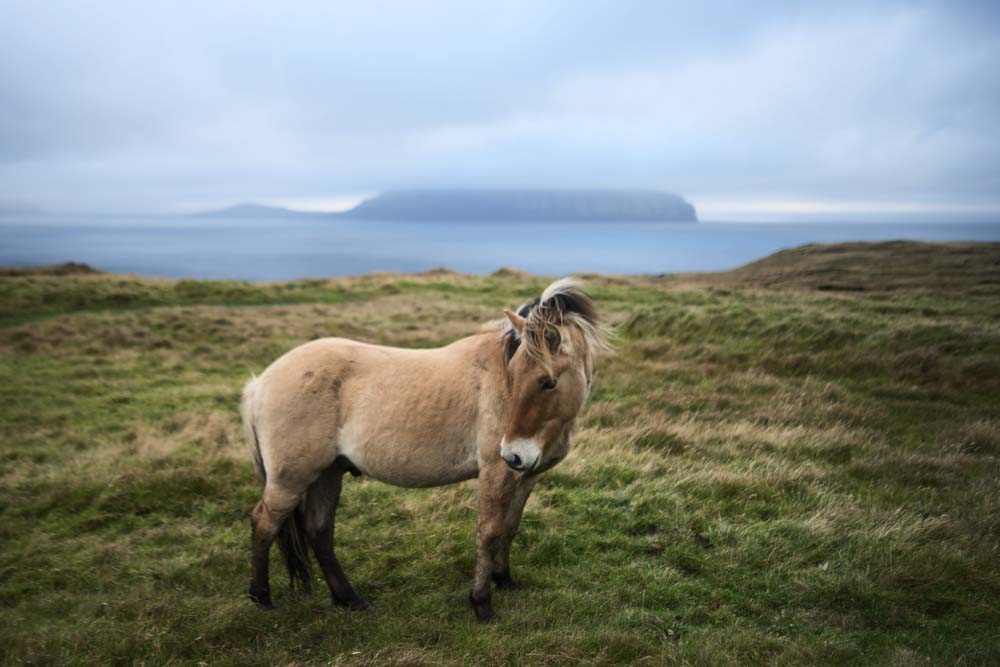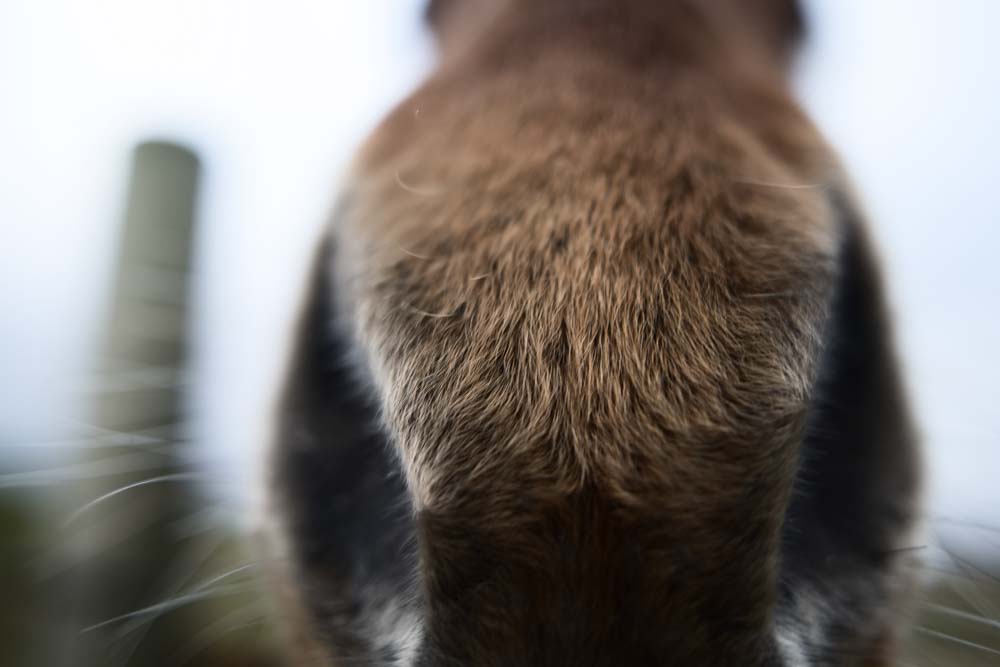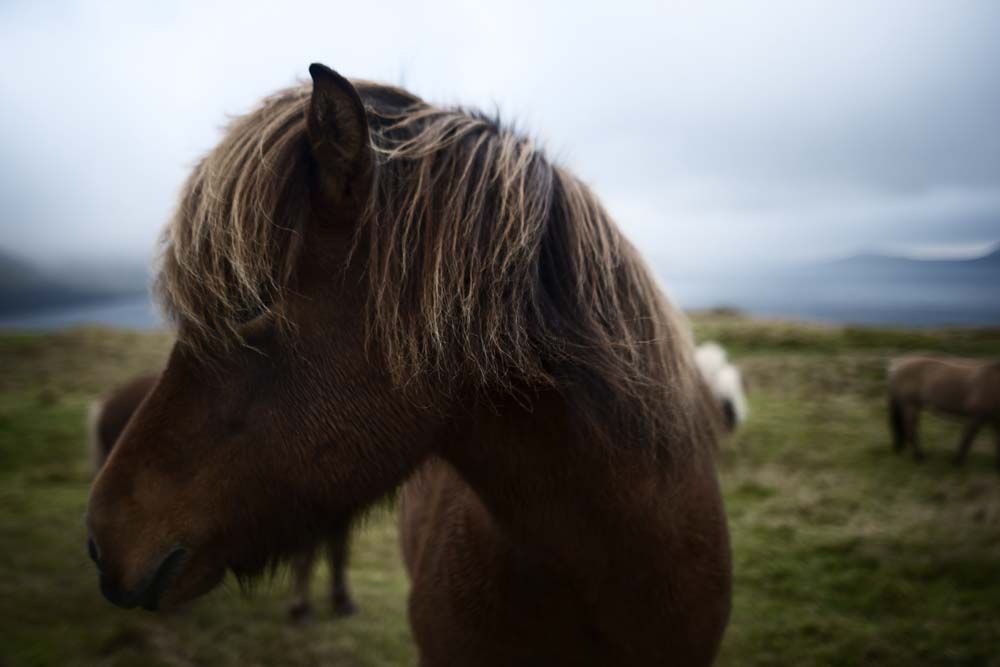Filming at Norðradalur
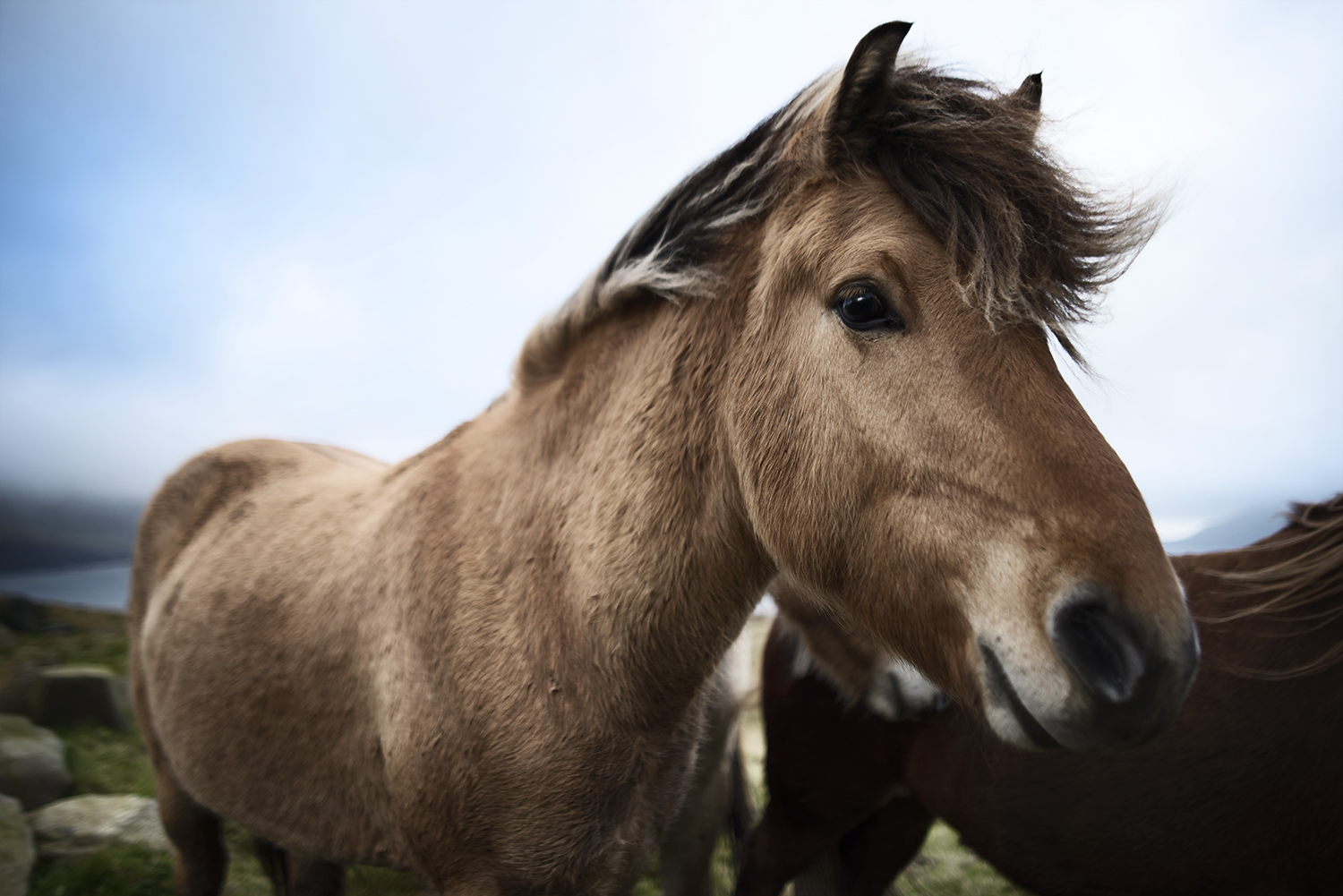
The advantage of a film project like Faroetale is that it opens up the opportunity to explore new areas. This is of course something we always do when we are traveling, but it gives us an extra motivation when we are going out filming as well.
Check out the Let's Go Slow video from Norðradalur
A field of horses on the Faroe Island. We accidentally met them when we where filming on the Faroe Islands for Thea's film: Faroetale.
Filming in new places
Our plan for today was to go over the mountains and shoot between Saksun and Tjørnuvík, but in the Faroe Islands you have to adapt to the weather and although it was relatively dry and nice, the heavy fog was a bit too thick for us to feel safe in the mountains. Therefore we changed our plan and aimed for a drive on the old road from Torshavn. We had never driven this road before, so we thought it might be a nice adventure for the day. On the way north, we were distracted from our plan by a sign to Norðradalur, we turned and followed the smallest hairpin bends we have ever driven, down the mountain and into the valley.
Horses and islands
Norðradalur was a great and mighty valley and at the bottom there was a large field with horses. Fittingly all of these horses stood in front of the view to the two islands: Koltur and Hestur (Hestur means horse in Faroese). It is also said that Koltur is Gaelic and means colt; young horse. The story we have been told is that during the Viking era, some Scottish women came (more or less willingly) to the Faroe Islands from Scotland. And it is told that these gaelic speaking wives or women, named the little island beside Hestur to Koltur "colt".
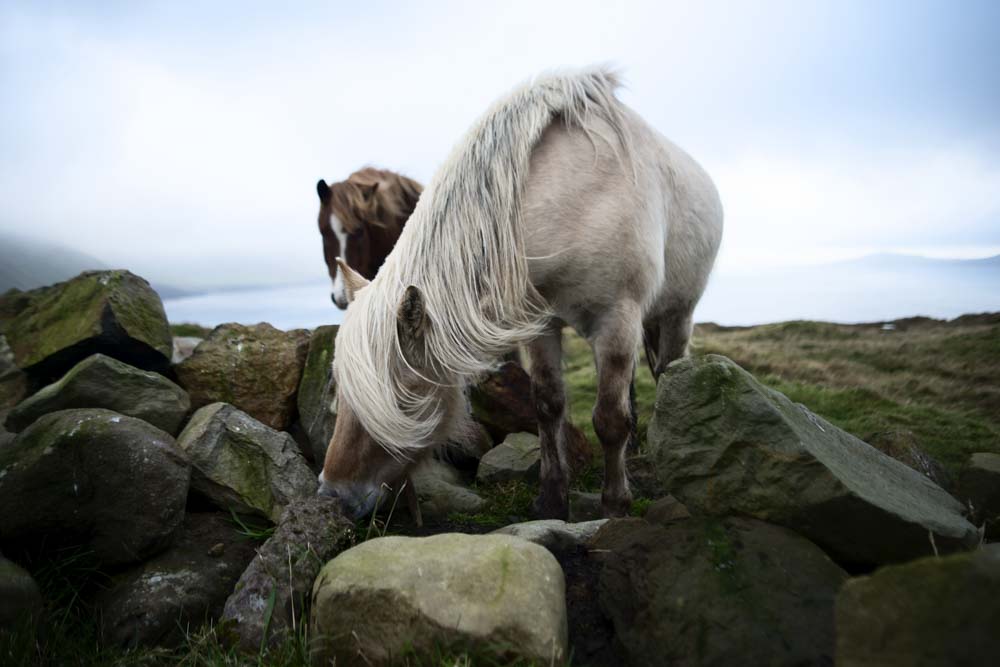
Horses on the Faroe Islands
Although the Faroes have their own horse breed, we have not seen so many horses during our stay. We are not sure if these horses are Faroese (they could be Norwegian or Icelandic), but they looked at home in their environment. Technically, the Faroese horse is a pony because of its height, but the Faroese call it a horse because of the animal's strength. We also heard that in the late 1800s and early 1900s there was a major export of the Faroese pony to Britain for use in mines, precisely because of their strength.
It was amazing to meet these picturesque animals and like most horses, they were most concerned about whether we had brought something sweet to nibble on (which we unfortunately did not have) and how many cuddles they could get out of us before we left them to continue filming elsewhere in the valley.
